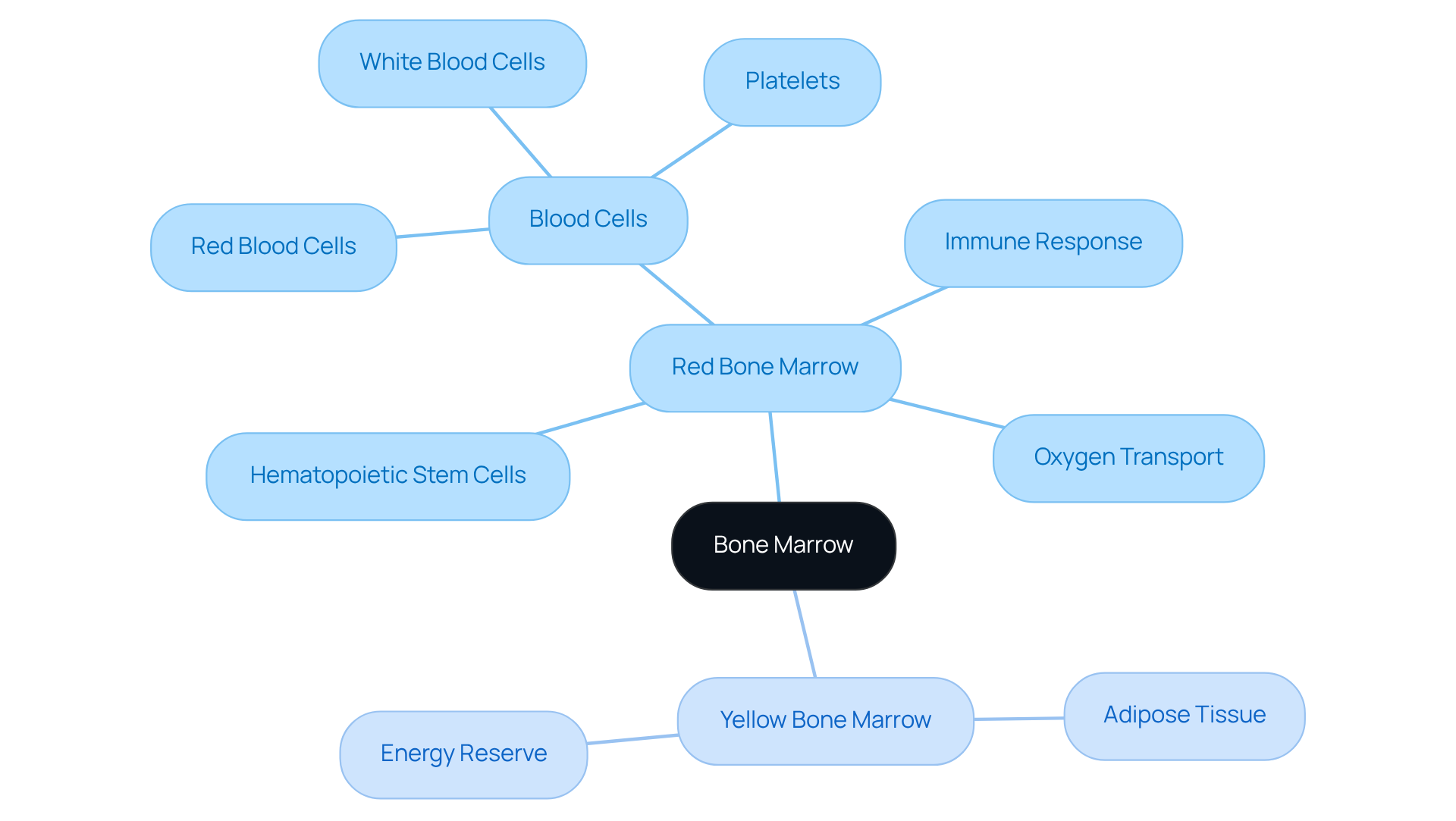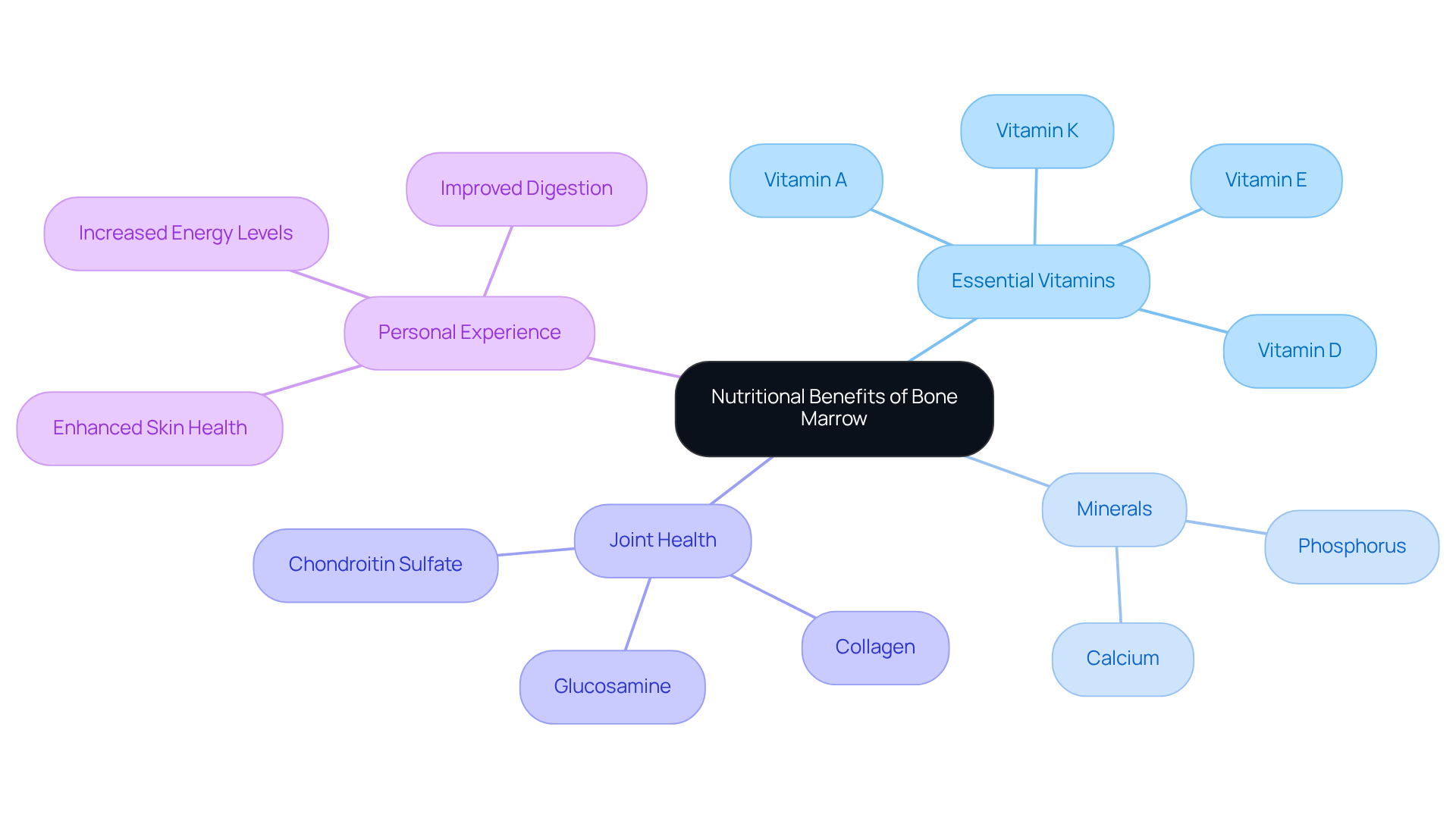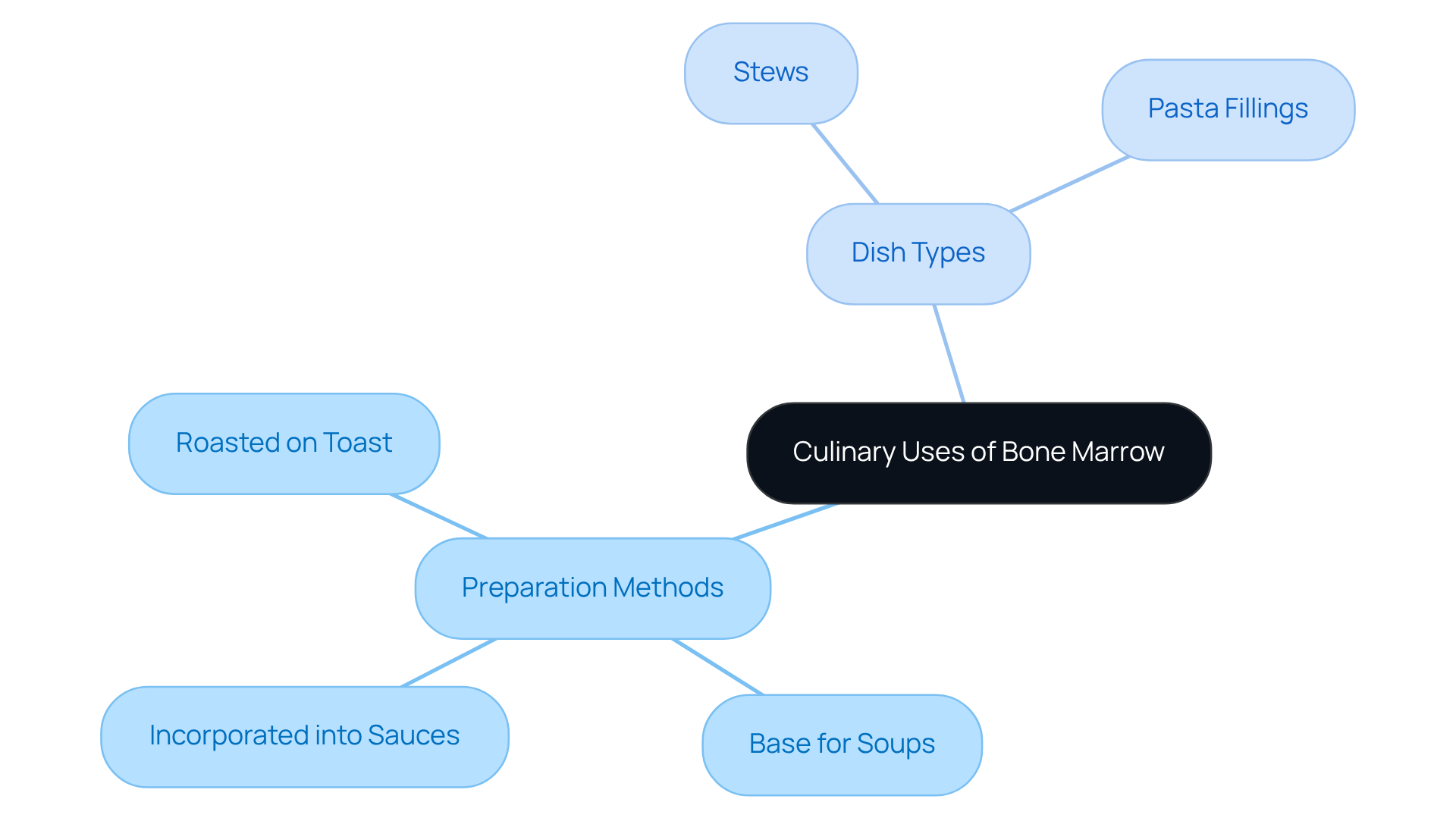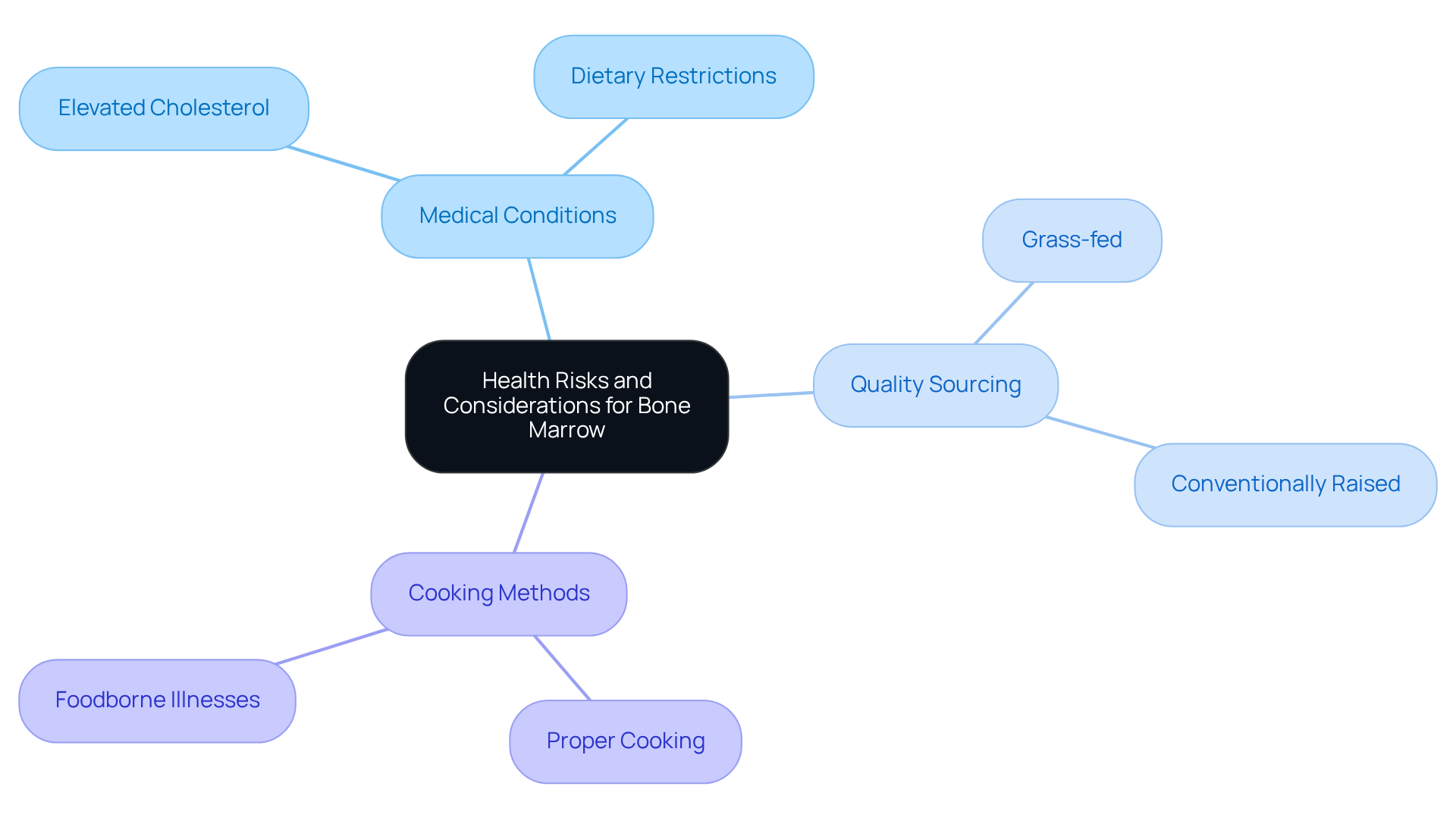Understanding the Benefits of Eating Bone Marrow for Health
Overview
Eating bone marrow provides a wealth of health benefits. These include:
- Enhanced immune function
- Improved joint health
- Increased skin vitality
These benefits are all due to its rich nutritional profile, which features collagen, glucosamine, and essential vitamins. Furthermore, the article details how these nutrients contribute to overall wellness and longevity. Personal experiences shared within the text highlight the positive effects of incorporating bone marrow into a balanced diet, encouraging readers to consider its inclusion for better health.
Introduction
Bone marrow, the soft and nutrient-rich tissue found within bones, is increasingly recognized for its impressive health benefits. This culinary delicacy is packed with essential vitamins, minerals, and unique compounds that not only enhance flavors in various dishes but also support immune function and joint health.
However, with such potential rewards, what considerations and risks should one be aware of when incorporating bone marrow into their diet? Exploring these aspects can provide a deeper understanding of how this ancient food can contribute to modern wellness.
Define Bone Marrow: Composition and Types
Soft, spongy tissue located in the center of skeletal structures plays a vital role in generating blood cells. There are two primary varieties of this tissue: red and yellow.
- Red tissue is rich in hematopoietic stem cells, which differentiate into red blood cells, white blood cells, and platelets. This differentiation is crucial for the body’s immune response and oxygen transport.
- In contrast, yellow tissue primarily consists of adipose (fat) tissue, serving as an energy reserve.
Understanding these components is essential as they enhance the overall benefits of eating bone marrow, particularly concerning immune function and joint wellness.

Explore Nutritional Benefits of Bone Marrow
Bone tissue serves as a nutrient-rich food, abundant in essential vitamins and minerals that support various aspects of health, particularly in anti-aging strategies. The Hunza people, renowned for their remarkable longevity, often incorporate nutrient-dense foods like bone tissue into their diets, potentially contributing to their impressive life expectancy. This tissue is especially high in collagen, which is vital for maintaining healthy skin, joints, and connective tissues.
Furthermore, it contains glucosamine and chondroitin sulfate, compounds known for their anti-inflammatory properties and support for joint health. The inclusion of fat-soluble vitamins A, D, E, and K further enriches its nutritional profile, enhancing immune function and overall vitality. Regular consumption of animal tissue aligns with the principles of a carnivore eating plan, emphasizing high-quality animal-based foods as part of a nutritious lifestyle.
My personal experiences over the past five years, during which I have adhered to a diet comprising 70-80% meat, have underscored the benefits of eating bone marrow as an essential part of my meals. Research indicates that the benefits of eating bone marrow, including improved digestion, increased energy levels, and enhanced skin health, make it a valuable addition to a balanced diet focused on longevity and wellness.

Culinary Uses of Bone Marrow
Bone tissue can be enjoyed in various culinary forms, making it a delightful addition to many dishes. It can be:
- Roasted and spread on toast
- Used as a base for soups and broths
- Incorporated into sauces to enhance flavor and nutrition
Furthermore, conventional recipes frequently include animal fat in:
- Stews
- As a luxurious filling for pasta
The creamy texture and rich flavor profile make it a favorite among chefs and home cooks alike. By experimenting with various cooking techniques, individuals can uncover new ways to enjoy this nutrient powerhouse while discovering the benefits of eating bone marrow.

Potential Health Risks and Considerations
While the inner tissue offers various advantages for well-being, it is essential to consider potential risks associated with its intake. Individuals with specific medical conditions, such as elevated cholesterol or certain dietary restrictions, should consult a healthcare professional before adding marrow to their diet.
Furthermore, sourcing high-quality, grass-fed animal tissue is crucial to avoid exposure to harmful substances that may be present in conventionally raised livestock. Ensuring proper cooking methods can also help mitigate risks related to foodborne illnesses.
By being mindful of these factors, individuals can safely enjoy the benefits of eating bone marrow.

Conclusion
Eating bone marrow presents a multitude of health benefits that are often overlooked. This nutrient-dense food not only supports immune function and joint health but also contributes to overall vitality and longevity. By understanding its composition—specifically the differences between red and yellow marrow—and incorporating it into a balanced diet, individuals can unlock the potential of this culinary gem.
The nutritional advantages of bone marrow are significant, highlighted by its rich content of collagen, glucosamine, and essential fat-soluble vitamins. These components play a crucial role in promoting skin health, reducing inflammation, and enhancing energy levels. Furthermore, its culinary versatility allows bone marrow to be enjoyed in various dishes, making it an accessible addition to any diet. However, it is vital to be aware of potential health risks and to source high-quality, grass-fed marrow to maximize benefits while minimizing concerns.
Incorporating bone marrow into daily meals is not merely a culinary choice; it represents a step towards improved health and wellness. Embracing this nutrient powerhouse can lead to better digestion, enhanced skin vitality, and a stronger immune system. As more individuals explore the benefits of eating bone marrow, it becomes evident that this traditional food holds the key to a healthier lifestyle. Prioritizing quality sourcing and mindful consumption will allow one to fully experience the advantages of this remarkable food.
Frequently Asked Questions
What is bone marrow?
Bone marrow is a soft, spongy tissue located in the center of skeletal structures that plays a vital role in generating blood cells.
What are the two primary types of bone marrow?
The two primary types of bone marrow are red marrow and yellow marrow.
What is the function of red bone marrow?
Red bone marrow is rich in hematopoietic stem cells, which differentiate into red blood cells, white blood cells, and platelets, crucial for the body’s immune response and oxygen transport.
What is the composition of yellow bone marrow?
Yellow bone marrow primarily consists of adipose (fat) tissue, which serves as an energy reserve.
Why is understanding bone marrow composition important?
Understanding bone marrow composition is essential as it enhances the overall benefits of eating bone marrow, particularly concerning immune function and joint wellness.




